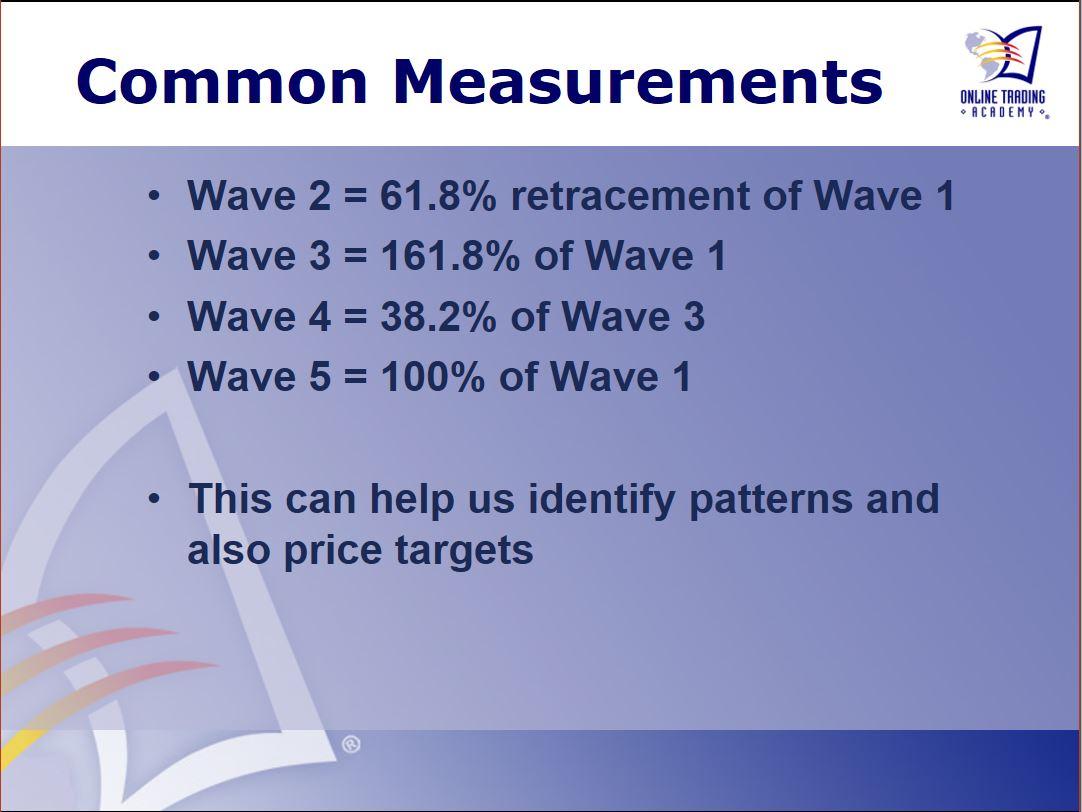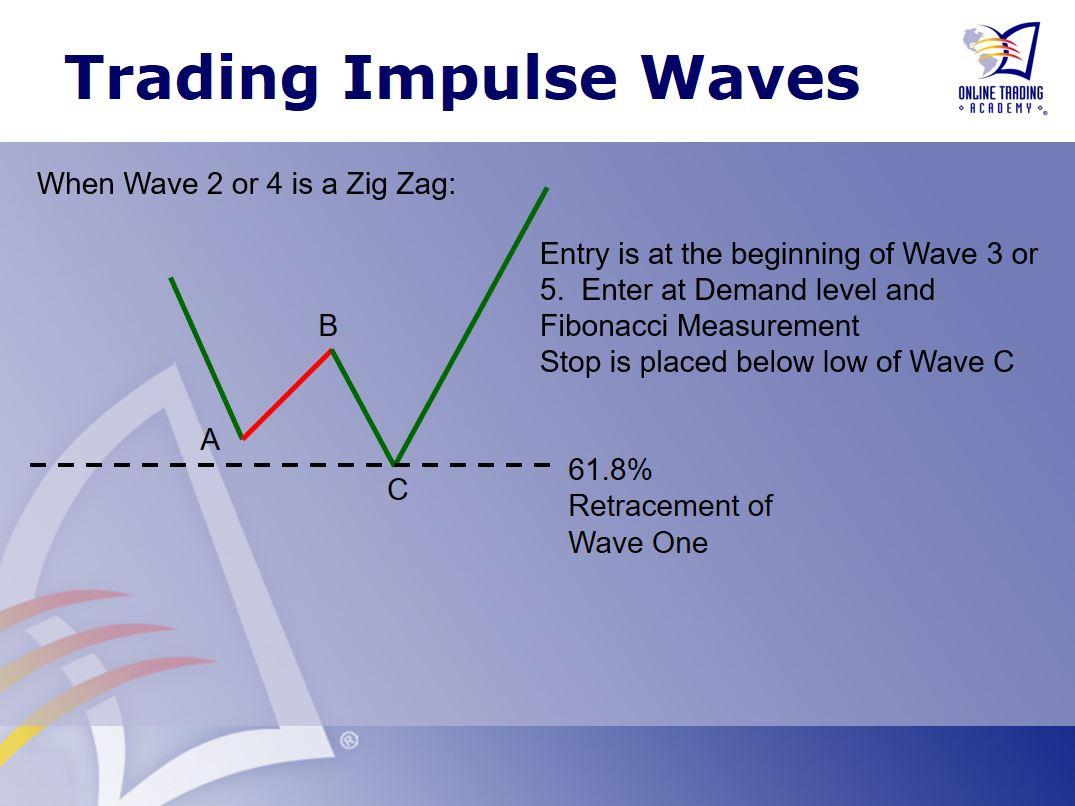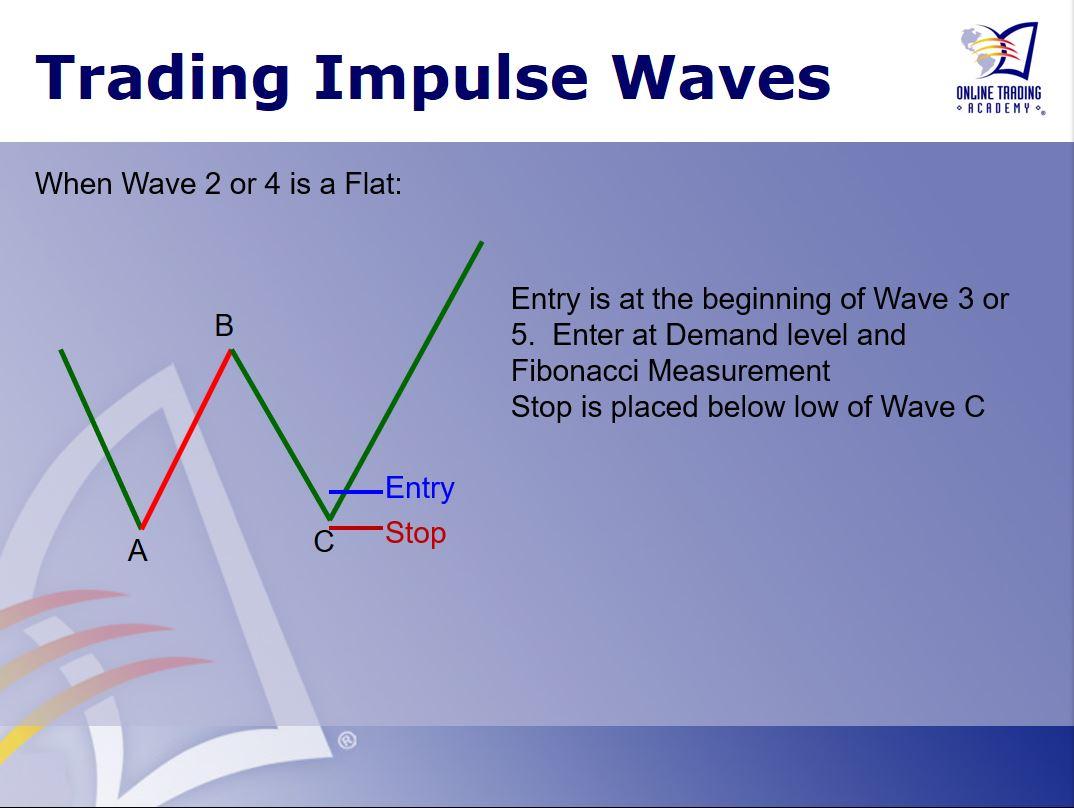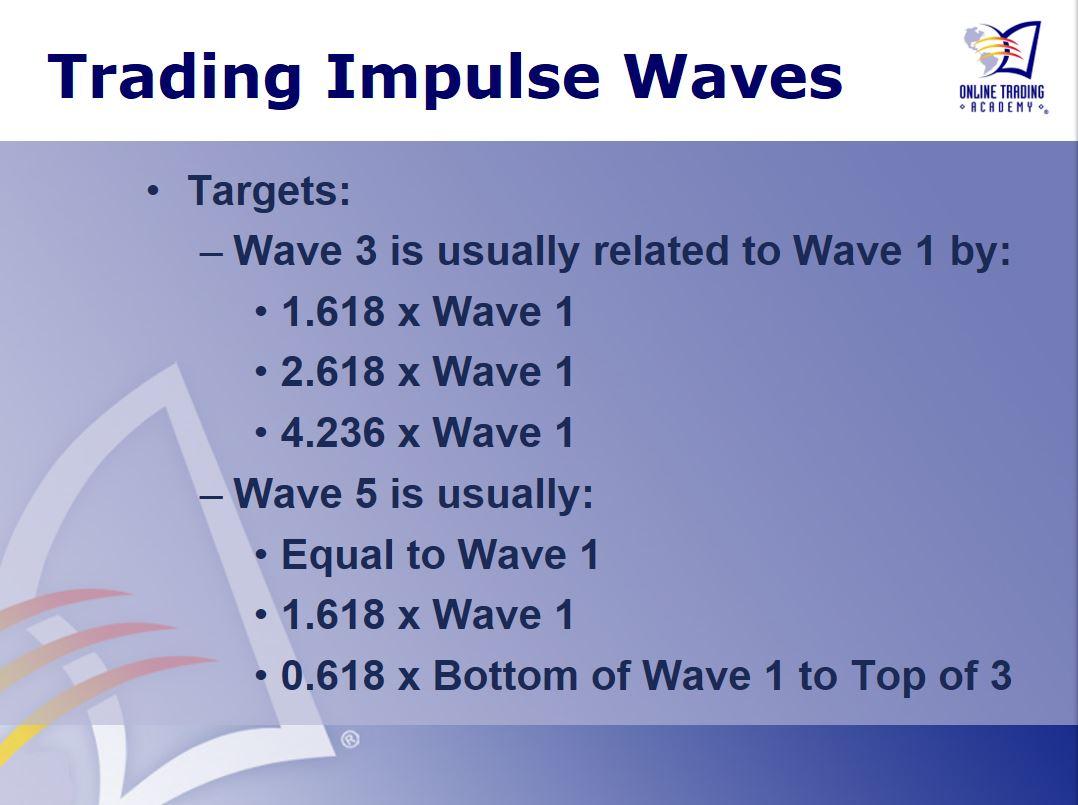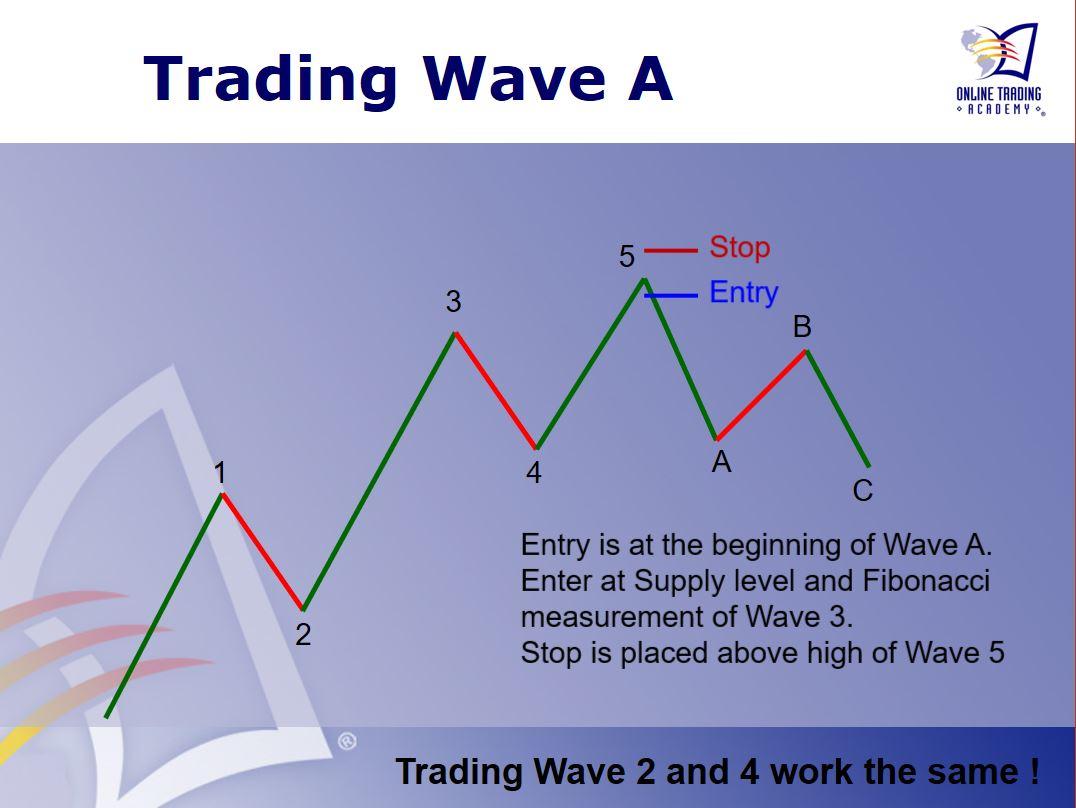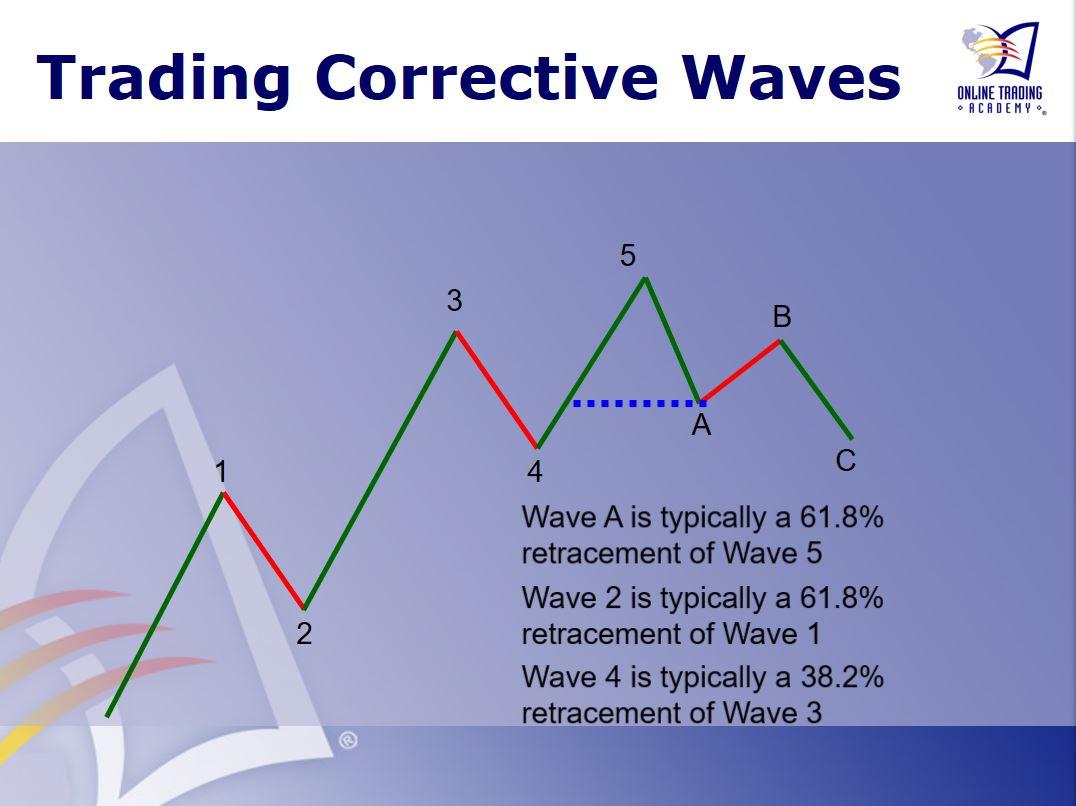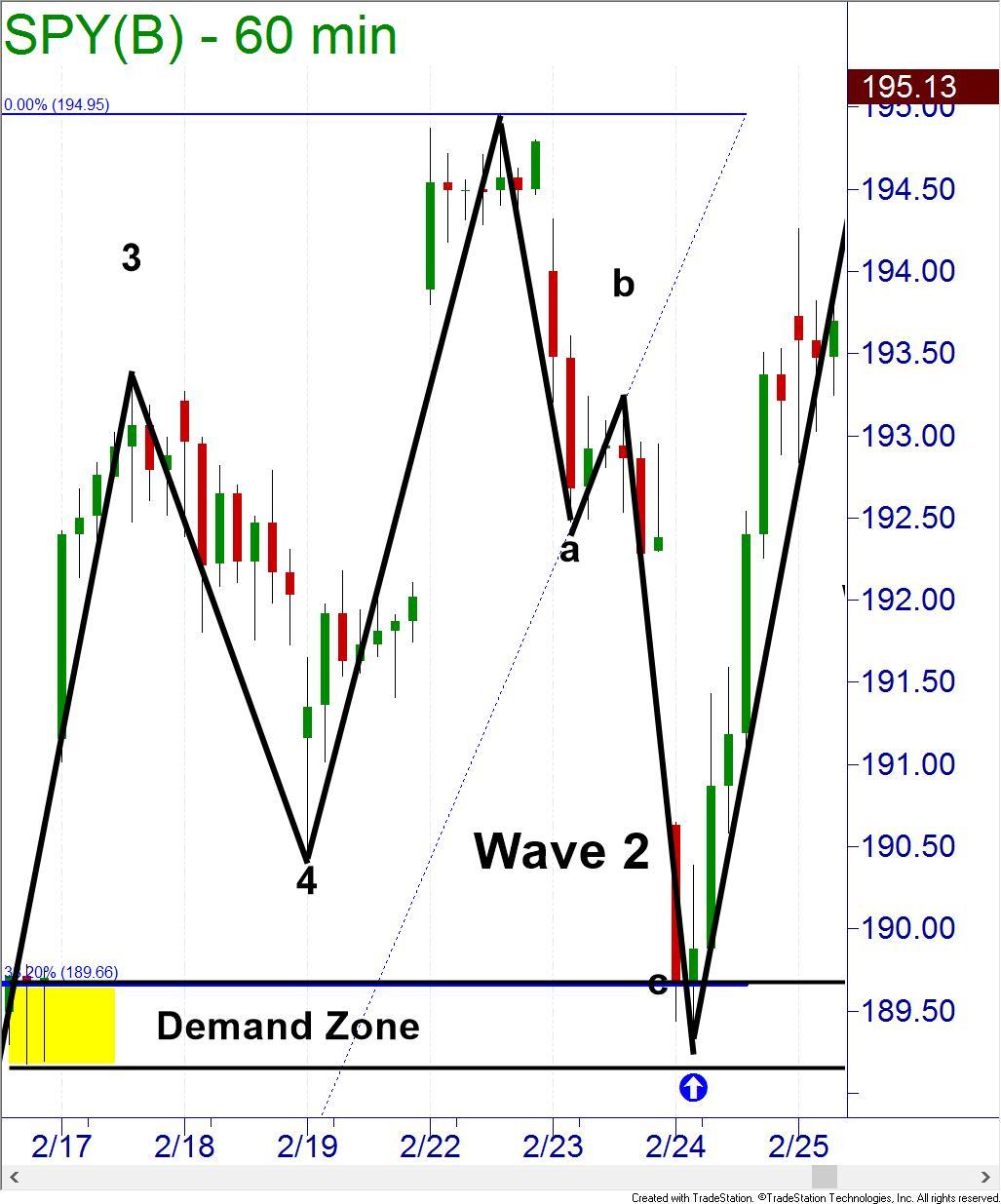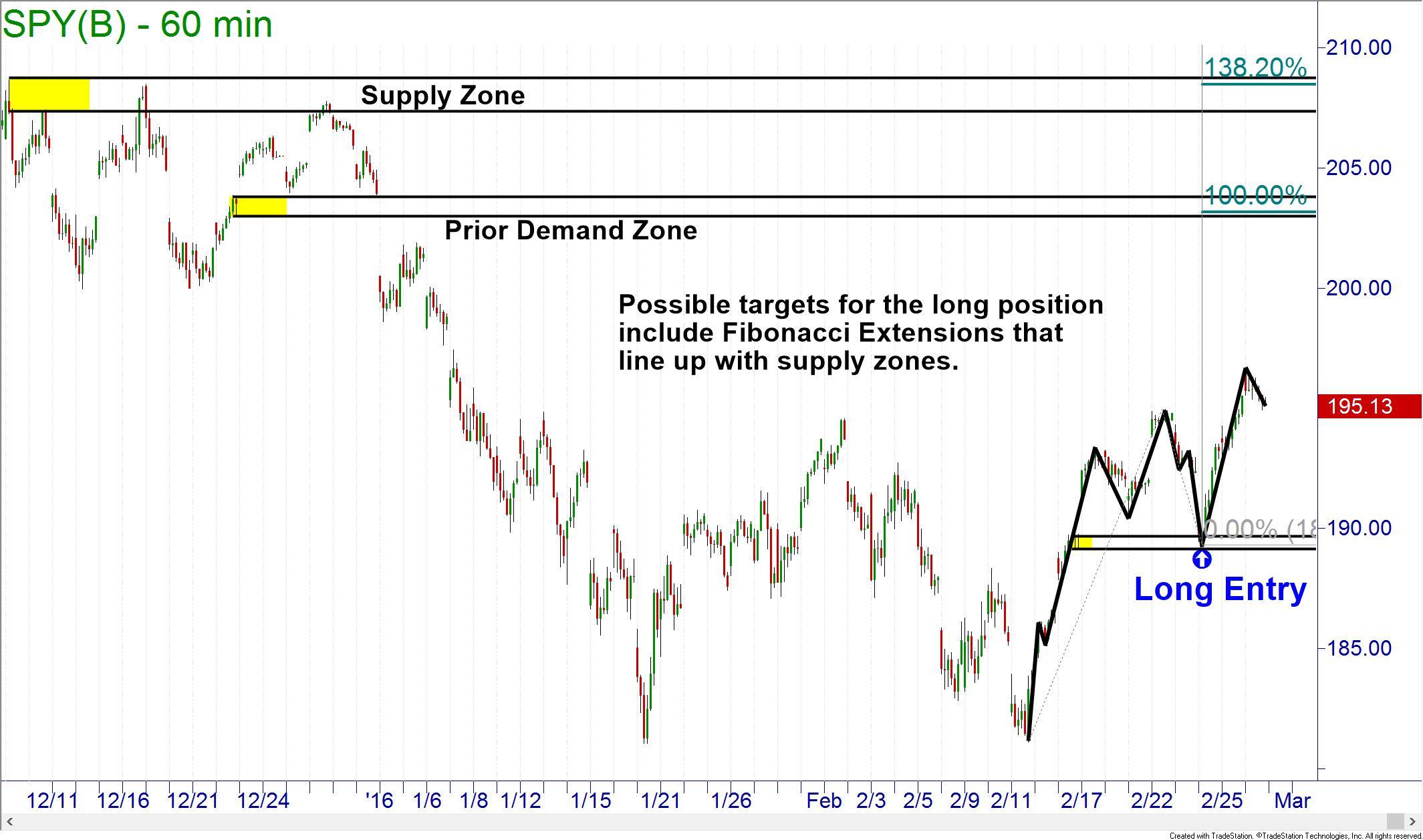Last week we learned about the basic tenants of Elliott Wave Theory including the wave structure and patterns. This week we will learn how to measure the waves and even some trading strategies that can be used for trading with the waves.
If you recall from the previous article, the waves form in distinct patterns and follow certain rules. In addition to these rules, there are guidelines that allow a trader to estimate the length and time of the waves. These guidelines then offer a trader or investor opportunities to enter positions with a higher probability of success.
Remember that guidelines are not as strong as rules, and prices can and will deviate from these guidelines. The best entries and exits to positions are found with Online Trading Academy’s Core Strategy. The Elliott Wave Theory can be applied as an odds enhancer to your core strategy of identifying strong supply and demand zones.
Last year I discussed the use of Fibonacci retracements and extensions as a means to estimate turning points of both retracements and corrections. These tools can be applied to measuring the impulse and corrective waves and, when they align with a supply or demand zone, can offer the trader the high quality entry and exit points I mentioned.
When analyzing the impulsive five wave movements, the most common measurements are:
Wave one can be difficult to identify and trade, so when attempting to trade impulses in the larger trend you may have a better chance for success when trading Waves Three or Five. The entry for the position would be at the beginning of Wave Three or Five. This should only be done when there is a strong supply or demand zone that corresponds with the Fibonacci retracement level usually associated with the end of the corrective wave.
When the corrective Wave Two is a zig zag, you would want to enter into the beginning of Wave Three at a demand or supply zone that is at a 61.8% retracement of Wave One. The entry for trading Wave Five would be at a 38.2% retracement of Wave Three.
Trading an impulse wave after a flat corrective wave may be easier as the end of Wave A often forms demand or supply for Wave C.
Of course, before you enter a position in the markets you should have also identified your targets. You would target the next opposing supply or demand zone which is where the Fibonacci extensions can help. You can measure the previous impulse waves and see which supply or demand zones line up with the measurements. The most common measurements are below.
You can also trade the corrective waves. These waves will be smaller and offer lower profits than the impulses but give additional opportunities while waiting for the large impulse moves. Since we know that the impulses are likely to end at a supply or demand level that matches with a Fibonacci measurement, we know our entry for the correction trade. We can enter right at the beginning of those corrections.
The targets would be the opposing supply or demand zone that corresponds to a Fibonacci retracement level. The most common targets are below.
Now that we have an idea of how the entries and exits are identified, let’s look at the markets and see how we can put Elliott Wave Theory to use.
In the 60-minute chart of SPY, you can see wave one, wave two and the start of wave three. The sub waves have also been marked. A trader looking for a long opportunity was able to enter at the point where price pulled back in wave two, to a point where it had both retraced 38.2% of wave one and also a fresh demand zone.
The target for the trade would need to be identified prior to entry into the position. Potential targets for the long trade would be where Fibonacci Extensions line up with supply zones. Note that this will only mark the end of wave three, not the end of the trend. The trader could lock in profits at the beginning of the wave four correction and then re-enter for wave five.
Elliott Wave Theory can be useful in order to increase your chances for success in your trading. Notice that it can only help increase chances; in order to know where the best entry and exit points are in any market you should apply Online Trading Academy’s core strategy. To learn these valuable tools, visit your local center today.
Neither Freedom Management Partners nor any of its personnel are registered broker-dealers or investment advisers. I will mention that I consider certain securities or positions to be good candidates for the types of strategies we are discussing or illustrating. Because I consider the securities or positions appropriate to the discussion or for illustration purposes does not mean that I am telling you to trade the strategies or securities. Keep in mind that we are not providing you with recommendations or personalized advice about your trading activities. The information we are providing is not tailored to any individual. Any mention of a particular security is not a recommendation to buy, sell, or hold that or any other security or a suggestion that it is suitable for any specific person. Keep in mind that all trading involves a risk of loss, and this will always be the situation, regardless of whether we are discussing strategies that are intended to limit risk. Also, Freedom Management Partners’ personnel are not subject to trading restrictions. I and others at Freedom Management Partners could have a position in a security or initiate a position in a security at any time.
Editors’ Picks
AUD/USD bounces to 0.6450, shrugs off mixed Australian jobs data

AUD/USD is rebounding to test 0.6450 amid renewed US Dollar weakness in the Asian session on Thursday. The pair reverses mixed Australian employment data-led minor losses, as risk sentiment recovers.
USD/JPY drops to test 154.00 on Japan's intervention warnings

USD/JPY extends losses to test 154.00 in Asian trading on Thursday. The pair is undermined by the latest US Dollar pullback, Japan's FX intervention risks and a softer risk tone. Focus shifts to more Fedspeak and US data.
Gold price finds buyers again near $2,355 as USD licks its wounds

Gold price is attempting a tepid bounce in the Asian session, having found fresh demand near $2,355 once again. Gold price capitalizes on a softer risk tone and an extended weakness in the US Treasury bond yields, despite the recent hawkish Fed commentary.
Manta Network price braces for volatility as $44 million worth of MANTA is due to flood markets

Manta Network price was not spared from the broader market crash instigated by a weakness in the Bitcoin market. While analysts call a bottoming out in the BTC price, the Web3 modular ecosystem token could suffer further impact.
Investors hunkering down

Amidst a relentless cautionary deluge of commentary from global financial leaders gathered at the International Monetary Fund and World Bank Spring meetings in Washington, investors appear to be taking a hiatus after witnessing significant market movements in recent weeks.
RECOMMENDED LESSONS
Making money in forex is easy if you know how the bankers trade!
Discover how to make money in forex is easy if you know how the bankers trade!
5 Forex News Events You Need To Know
In the fast moving world of currency markets, it is extremely important for new traders to know the list of important forex news...
Top 10 Chart Patterns Every Trader Should Know
Chart patterns are one of the most effective trading tools for a trader. They are pure price-action, and form on the basis of underlying buying and...
7 Ways to Avoid Forex Scams
The forex industry is recently seeing more and more scams. Here are 7 ways to avoid losing your money in such scams: Forex scams are becoming frequent. Michael Greenberg reports on luxurious expenses, including a submarine bought from the money taken from forex traders. Here’s another report of a forex fraud. So, how can we avoid falling in such forex scams?
What Are the 10 Fatal Mistakes Traders Make
Trading is exciting. Trading is hard. Trading is extremely hard. Some say that it takes more than 10,000 hours to master. Others believe that trading is the way to quick riches. They might be both wrong. What is important to know that no matter how experienced you are, mistakes will be part of the trading process.
